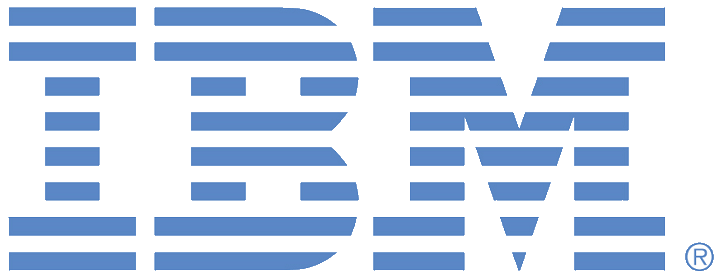
IBM’s sweeping transformation has resulted in a leaner and faster-moving company that fully embraces partnerships at every level of its business, marking a massive turnaround from just 5 years ago when partnerships were rare because IBM’s sheer mass made almost everyone a competitor.
Before Arvind Krishna took over as CEO three years ago, IBM was vainly attempting to compete in the cloud-infrastructure space with AWS, Microsoft, and Google Cloud. Today, it is close partners with each of those hyperscalers and has built up billion-dollar businesses with each, along with significant engagements with SAP, Oracle, Salesforce, Workday, ServiceNow, and many other top software companies.
Under IBM Ecosystem general manager Kate Woolley, IBM is also aggressively expanding its partners ecosystem business with resellers, ISPs, systems integrators, developers, and others, according to Woolley. This is clearly an initiative supported by CEO and chairman Krishna because, before taking the ecosystem-leader role at the beginning of 2022, Woolley had served as Krishna’s chief of staff for two years.
In this latest installment of our Partners Ecosystem Innovation series, Woolley discusses IBM’s overall ecosystem strategy, offers some great customer/partner engagement examples, and outlines a new program launched this year called PartnerPlus. The article below offers a number of in-depth highlights from Woolley, and you can watch my full interview with Woolley here. Tomorrow we’ll conclude our series with an in-depth analysis of Google Cloud’s ecosystem strategy, and please check out our earlier analyses of parallel programs from ServiceNow, Snowflake, Oracle, Workday, and SAP.
Company Overview: Ranked #7 on the Cloud Wars Top 10, IBM had cloud revenue in 2022 of $22.4 billion, up 11%. Over the past three years, IBM has undergone enormous changes under Krishna and has sharpened its focus on hybrid cloud, AI, and data. Plus, IBM Consulting offers clients deep industry knowledge accumulated across decades, with cloud revenue growth within IBM Consulting growing at more than 25%. That combination of broad and deep technology expertise, plus deep industry and business-process expertise along with its high-priority partners business, has fully rejuvenated IBM and made it once again a powerful force of innovation and growth.
Ecosystem Leader: Kate Woolley, IBM Ecosystem general manager
Ecosystem Position: “The ecosystem is becoming increasingly important as we think about how partnerships bring solutions to market faster, how they help our clients achieve more success, and we’re expecting our ecosystem to just continue to play an increasingly larger role. And that is driven by our client needs,” Woolley said. “Every client’s on a digital transformation journey, and every client wants specialization that really no one vendor alone can provide. And so the IBM ecosystem is made up of tens of thousands of partners across all different types: resellers, hyperscalers, technology providers, ISPs, system integrators — you name it, it’s part of the IBM ecosystem. And it’s all about how do we leverage those joint strengths of those players to deliver the rise of a digital business and those digital transformations.”
Register here for your on-demand pass to view all content from Partners Ecosystem Digital Summit. The digital event, which took place on April 20, focused on analyzing the business and IT imperatives around cloud, AI, automation, data modernization, and cybersecurity that define the future of partnerships.
Ecosystem Priorities: “As we think about digital business and digitization, and how we leverage the IBM ecosystem to achieve that, we’re always thinking about how do can actually co-create with the IBM ecosystem to help with that digitization,” Woolley said. “We have a lot of different ways that our partners engage with IBM technology: they can build on IBM technology, they can embed IBM technology, they can build services around IBM technology, or they can sell IBM technology. And if I think about the rise of digital business, a lot of what we’re doing with our build partners and where we embed IBM technology is focused on how we can deliver value even faster in that space… So how do we co-create with our partners to deliver value and a great example there is where we co-created with our partner and with a client.
Innovation Agenda: Woolley shared an example of a 3-way collaboration involving IBM, business partner AtlasRTX, and higher-ed customers. “We wanted to change the game for universities and for higher education. So the problem we were trying to solve with a couple of universities there was, how do they increase enrollment by being more responsive? So if you think about students that are investigating higher education, they’re going to be doing that on in the evenings on the weekends, but that’s when staff at universities are not working! So as we thought about how do we digitize that, we co-created a solution using IBM technology built on natural language processing to create a digital assistant. And those universities have now seen a big increase in terms of their conversion rate. They saw conversion rates go up by 5%, and now almost 20% of their engagements online result in an application. So as you think about the rise of digital business, that’s a great example of how do we help clients digitize and simplify using our ecosystem.”
Unique Advantage: IBM’s long history with and expertise in AI creates a “huge opportunity for the ecosystem around AI,” Woolley said. “IBM talks about hybrid cloud and AI as a trillion-dollar opportunity, and a huge piece of that is AI. Our AI portfolio includes — and we talked about this — we’ve embedded IBM Watson Assistant inside another software product, and we’ve announced the general availability of our embeddable AI libraries around natural-language processing speech-to-text and text-to-speech. Now we’re focusing on how do we actually make that available so that it can be embedded and leveraged inside of other products. And I think that is going to be absolutely critical for us to continue to do more and more of that, because not everyone’s going to want to recreate this technology themselves. So they can partner with us and leverage IBM technology with their strengths to make their products better.”
Big Quote: “We’re focused on how do we actually drive that business value for our clients and unlock that using our ecosystem. So unlocking that using co-creation, unlocking that using other programs we have in place, and part of that is a big announcement we made at the start of this year around how we have completely reimagined the IBM ecosystem program, which is now called Partner Plus,” Woolley said. “It’s a completely new program designed with our partners in terms of all of the feedback we received from them, and then we co-created the program with them. We also tested with many of our partners at the end of last year all of the details of the program. And it’s based on how do we drive more value with our partners and provide them the program that’s going to allow them to move faster and be more successful.”
Get the Full Story: You can watch my full interview with IBM Ecosystem general manager Kate Woolley here.









